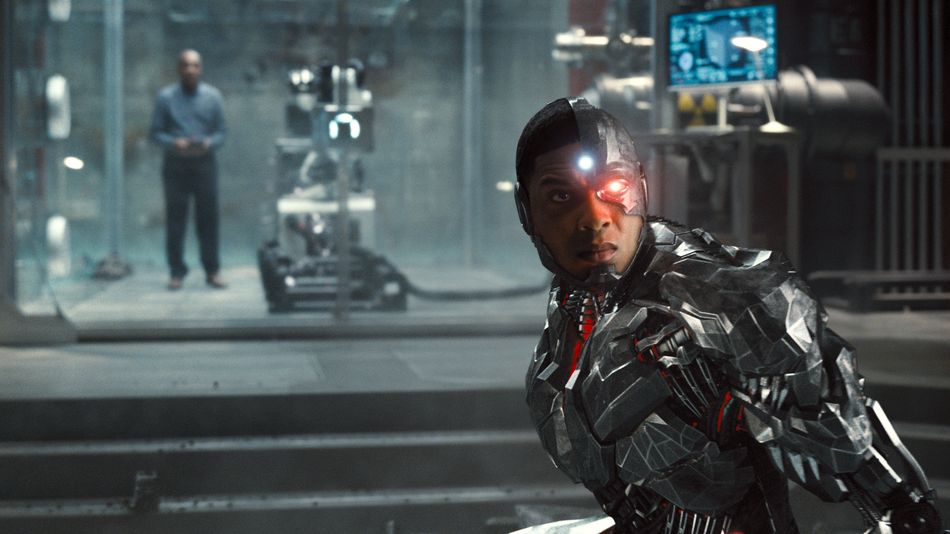
Image: HBO Max
After over three years of rumors and anticipation, the Snyder cut — director Zack Snyder’s version of Justice League is set to hit HBO Max on Thursday. Snyder directed part of the 2017 Justice League before stepping away for family reasons, and has long spoken of his version as a contrast to Joss Whedon’s, which hit theaters that fall.
Critics who screened the movie early found it surprisingly fun and enjoyable, even with a four-hour runtime. Mashable’s Angie Han called it “an epic upgrade” from the Snyder-Whedon mashup of 2017, “with purpose and perspective.”
Here’s what critics are saying about the new Justice League edit:
The Snyderness
The glut of modern superhero movies has implicitly proven that that kind of strong directorial sense—idiosyncrasies and risks that indicate someone’s fingerprints all over a work of art rather than an over-buffed and polished corporate product—is necessary…Snyder’s penchant for slow motion only drives the point home, as the most outlandish sequences are bestowed a sort of grace by his need to capture and appreciate specific arcs of motion as if they were moving Renaissance paintings.
Siddhanth Adlakha, The Observer
The most striking difference is Snyder’s mythic approach to these characters, a choice which further cements him as a stunning visualist regardless of his narrative instincts…the gargantuan runtime allows for a series of slow-motion tableaus, captured with the reverence of a sculptor in ancient Greece. It’s the first time this approach has really worked in these films — one imagines it might feel like watching gods in motion when viewed on an IMAX screen — but the reason it works is that these living dioramas are largely divorced from the central plot. They aren’t a distraction for once, but a dreamy prelude, to a film that doesn’t really get going for the first hour and a half.
Snyder is clearly a director who loves the appeal of Big Ideas (and there are scenes in this movie that hint at an even more complex version), but there is still some difficulty here in balancing those big ideas with the characters themselves, giving them enough airtime to believably make decisions that fit into the narrative.
John DeFore, The Hollywood Reporter
the film is stuffed with big and small things that do nothing to move it forward, or to offer light relief from a never-ending river of CG action sequences. (As Batman’s long-suffering butler, Jeremy Irons comes closest to serving that function.) Its dialogue overflows with redundancies, clinkers and head-scratchers like “show her the darkness before the daylight of history.” And really, anybody who thinks a temple full of spears-drawn Amazons needs to announce “we have no fear!” in unison needs to go back to screenwriting school.
Four whole hours
Four hours might seem unnecessarily long, but in this case, it allows for time to see these characters when they aren’t superheroes, and makes them more human as a result.
The fleshed-out through-lines simply allow the story as a whole to breathe: small character beats add humanity (a scene involving Jeremy Irons’ Alfred, Gal Gadot’s Diana and some tea is charming), extended scenes (there’s a surprising amount of the original cut here) provide clarity, and the absence of the broadest humour in the Whedon cut helps keep the tone consistent.
Siddhanth Adlakha, The Observer
The broad strokes, however, are largely the same, and the film’s length feels inexcusable by the time the end credits have mercifully rolled…there’s very little friction between the main characters at all, which isn’t a foundation that can support the weight of a 4-hour film.
…While that length may seem oppressive, oddly enough you don’t really feel it (I did split it up into two two-hour parts, and the chapter titles provide natural breaks). There’s always something going on that’s varying degrees of interesting, whether it’s an enormous, physics-defying battle scene or an intimate backstory-revealing interaction between two characters. The pacing…is almost leisurely, giving each character a lot of space to explore their various environments…
John DeFore, The Hollywood Reporter
at 242 minutes, very few of them offering much pleasure, it’s nearly unendurable as a single-sitting experience. If it were watched in parts — title cards identify six chapters and an epilogue, and some rumors suggested it would be released as a series — those segments would fail to deliver the shapely balance of energies and pacing that one expects these days from even a merely competent TV show.
This expanded version may be exactly the product desired by the legion of Snyder fans who cried to the heavens for its release. But nonmembers of that cult will find it just as unenjoyable as the original.
Justice for Cyborg
Where in 2017 his arc was significantly cut, here he is the heart and soul of the movie, with greater focus being placed on his strained relationship with his father Silas (Joe Morton) to occasionally moving effect.
Siddhanth Adlakha, The Observer
However, while the film frequently stands on the precipice of a great Cyborg story, it stops frustratingly short. It explores his human past in far more detail than the 2017 film, including a college incident involving ethical hacking. His powers expand on this thread, giving him unlimited access to practically every technology (which he uses to help people down on their luck, albeit from the shadows). But despite setting up dilemmas about the complex responsibility these powers entail, the film sidelines them in favor of CGI mayhem.
Compared to the theatrical film, Snyder has much more of an interest in Cyborg’s psychology (and his physiology, and the ways they intersect). He often presents Cyborg interfacing with machines in the form virtual reality, with Victor’s self-image walking through dismal dreamscapes, and changing in appearance to reflect his evolving relationship with his body.
Zach Snyder’s Justice League hits HBO Max Thursday.
